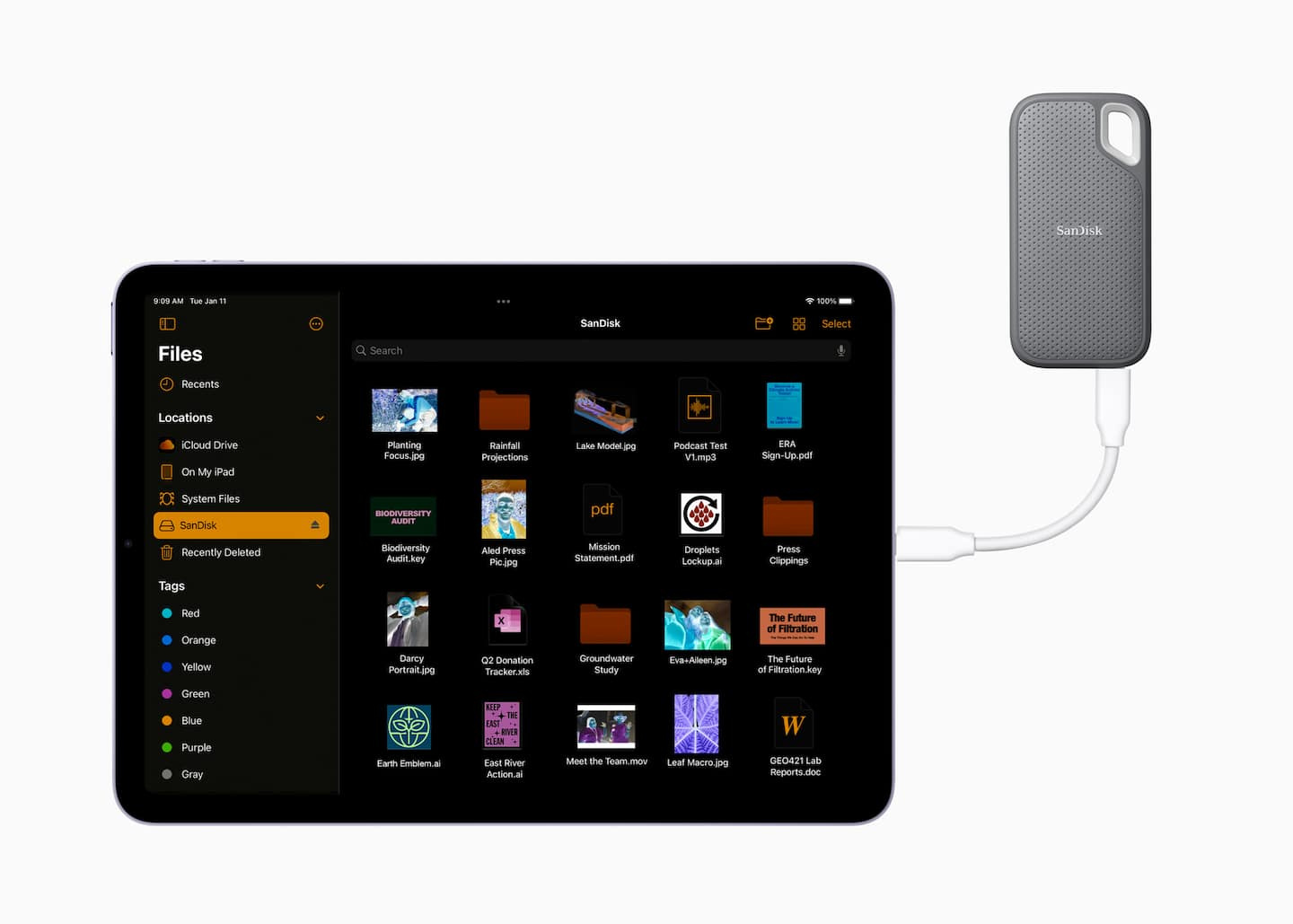We agree, an iPad tablet or that of another brand does not cost the same price when the storage is 64 GB or 2000 GB (2 terabytes). In Apple's catalog, a 64GB iPad Air M1 tablet costs $749, but $200 more with 256GB storage. The 11-inch 128GB iPad Pro starts at $999, the 2TB version, 2379 $ before taxes of course.
Not to mention that tablets that are a few years old often only have 32 GB of storage or even less and that it is impossible to increase the memory of the internal SSD storage. To overcome this basic capacity, there are very simple solutions that cost less than buying a new device.
With today's internet and fast connections, iPad tablets have access to iCloud Drive and iCloud Photo Library services and it's possible to use third-party online services like Google Drive, Drop Box, and even the included 1TB OneDrive service with your Microsoft 365 account if you have one.
In short, all you have to do is use cloud computing as a second storage for your tablet.
You can even back up everything on your tablet there. This cloud storage protects your files against breakage, loss or theft of your device. No matter what, your files and apps and all your multimedia will always be there, online.
The best use of cloud storage is for photos and especially videos. These file types take up a surprising amount of space. So moving a collection of photos and videos to the cloud can free up several gigabytes of storage on your tablet.
With the Apple ecosystem, view photos and videos stored in your iCloud Photo online library on your TV; no need to download everything to your tablet's memory. Same logic for your music files, the Apple Music service which includes iTunes Match streams your music to your iOS devices (iPad and iPhone).
You can also use AirPlay to project your iPhone or iPad screen to your TV, allowing you to interact with any app on your smartphone or tablet using your TV.
Another even simpler solution is to connect external storage or flash memory.
With your tablet's iPadOS system and file management capabilities, the iPad has gained the ability to support external drives and USB flash drives. This allows you to store media files on inexpensive external storage and save your iPad space for essential apps.
First thing to check, the type of connection-charging of your iPad: USB-C, Lightning connector, otherwise use an adapter in case of incompatibility. Second element, this external support should ideally be powered by the same connection of your iPad – and not by an external power supply, which is too bulky.
To connect an external hard drive, USB drive, or SD card reader to your iPad, use the Files app to view the contents of external storage.
The iPad system can measure occupied and free space and discover content that takes up too many megabytes.
Go to Settings > General > iPad Storage. Wait a few seconds to know in descending order the size of each application.
For example, if you no longer play Asphalt 8, type the name of the game to uninstall or delete it. In either case, 3.26 gigabytes will be freed up.
Alternatively, go to Settings > Safari > Clear Browsing History to delete cached data and your browsing history.













